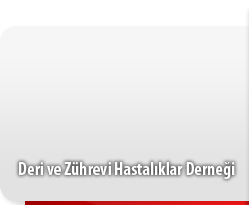Factors in the etiopathogenesis of post-adolescent female acneEzgi Özkur1, Damla Demir2, İlknur Kıvanç Altunay1, Mustafa Demir3, Oktay Tosun41University of Health Sciences Turkey, Şişli Hamidiye Etfal Training and Research Hospital, Clinic of Dermatology, İstanbul, Turkey
2University of Health Sciences Turkey, Ümraniye Training and Research Hospital, Clinic of Dermatology, İstanbul, Turkey
3University of Health Sciences Turkey, Ümraniye Training and Research Hospital, Clinic of Radiology, İstanbul, Turkey
4University of Health Sciences Turkey, Şişli Hamidiye Etfal Training and Research Hospital, Clinic of Gynecology and Obstetrics, İstanbul, Turkey
Background and Design: Post-adolescent acne has been defined as acne that persists or whose onset starts beyond the age of 25 years. The presence of hyperandrogenemia, polycystic ovary syndrome (PCOS), dyslipidemia, and insulin sensitivity play a role in etiopathogenesis of post-adolescent acne in women as shown in previous studies. This study was conducted to investigate these relationships.
Materials and Methods: We included 45 female patients with post-adolescent acne and 30 age, sex, and body mass index-matched healthy controls. Demographic characteristics, clinical signs of hyperandrogenemia, pelvic ultrasound scan, and hormonal assessment including the [total testosterone (TT), sex hormone binding globulin (SHBG), dehydroepiandrosterone sulfate (DHEAS), follicle stimulating hormone (FSH), luteinizing hormone (LH), prolactin (PRL), estradiol (E2)] and fasting plasma glucose, and insulin and lipid levels were recorded.
Results: Woman with post-adolescent acne had the marked presence of menstrual abnormalities (37.7%), hirsutism (13.3%), androgenetic alopecia (11.1%), metabolic syndrome (MS) (32.4%), and PCOS (22.2%). Pelvic ultrasound scans showed that 17.8% of the patients had polycystic ovaries. In addition, the percentage of current smokers was significantly higher in the patient group than the controls (p=0.001). TT and LH were significantly higher in post-adolescent acne patients than the controls (p=0.048, and p=0.012, respectively). No significant differences were observed between patients and controls in terms of SHBG, DHEAS, FSH, PRL, E2, and total cholesterol, low-density lipoprotein cholesterol, high-density lipoprotein cholesterol, and triglyceride levels. No correlations were observed between these parameters and the severity of acne.
Conclusion: Although laboratory hormonal assessment showed no significant difference, post-adolescent acne patients had marked menstrual irregularities, polycystic ovaries, androgenetic alopecia, hirsutism, and MS. However, insulin resistance and dyslipidemia may not play a major role in the pathogenesis of post-adolescent female acne. Keywords: Acne, hyperandrogenemia, polycystic ovary syndrome, dyslipidemia, insulin sensitivity
Post-adölesan akneli kadınlarda etiyopatogeneze etki eden faktörlerEzgi Özkur1, Damla Demir2, İlknur Kıvanç Altunay1, Mustafa Demir3, Oktay Tosun41Sağlık Bilimleri Üniversitesi, Şişli Etfal Eğitim ve Araştırma Hastanesi, Dermatoloji Bölümü
2Sağlık Bilimleri Üniversitesi, Ümraniye Eğitim ve Araştırma Hastanesi, Dermatoloji Bölümü
3Sağlık Bilimleri Üniversitesi, Ümraniye Eğitim ve Araştırma Hastanesi, Radyoloji Bölümü
4Sağlık Bilimleri Üniversitesi, Şişli Etfal Eğitim ve Araştırma Hastanesi, Jinekoloji ve Obstetri Bölümü
Amaç: Post-adölesan akne, 25 yaşından sonra başlayan veya devam eden akne olarak tanımlanmaktadır. Daha önce yapılan çalışmalarda hiperandrojenemi, polikistik over sendromu (PKOS), dislipidemi ve insülin direnci, etiyopatogenezden sorumlu saptanmıştır. Bu çalışma, postadölesan akne hastalarındaki etiyopatogenezi aydınlatmak amacıyla yapılmıştır.
Gereç ve Yöntem: Çalışmamıza 45 post-adölesan akneli kadın hasta ve 30 yaş-cinsiyet-vücut kitle indeksi eşlenmiş sağlıklı kontrol dahil edildi. Demografik özellikler, hiperandrojenemi bulguları, pelvik ultrason, serum hormon düzeyleri [total testosteron (TT), seks hormon bağlayan globulin (SHBG), dehidroepiandrosteron sülfat (DHEAS), folikül stimülan hormon (FSH), lüteinizan hormon (LH), prolaktin (PRL), östradiol (E2)], plazma açlık glukozu, insülin ve lipitler değerlendirildi.
Bulgular: Post-adölesan aknesi olan kadın hastalarda menstrüel düzensizlikler (%37,7), hirsutizm (%13,3), androgenetik alopesi (%11,1), metabolik sendrom (%32,4) ve PKOS (%22,2) belirgin olarak artmış saptandı. Pelvik ultrasonda hastaların %17,8inde overler polikistik görünümde saptandı. Ayrıca sigara içenlerin oranı, kontrol grubuna göre istatistiksel olarak anlamlı yüksekti (p=0,001). Sadece TT ve LH değerleri post-adölesan akne hastalarında istatistik olarak daha yüksek saptandı (sırasıyla; p=0,048, p=0,012). SHBG, DHEAS, FSH, PRL, E2, total kolesterol, LDL-C, HDL-C ve trigliseritlerin düzeyinde hasta veya kontrol grubu arasında fark saptanmadı. Ayrıca akne şiddetiyle bu değerler arasında korelasyon saptanmadı.
Sonuç: Laboratuvar parametrelerinde fark çıkmamakla birlikte; post-adölesan akneli kadın hastalarda artmış menstrüel düzensizlikler, polikistik overler, androgenetik alopesi, hirsutizm ve metabolik sendrom artmış sıklıkta saptanmıştır. Ancak insülin direnci ve dislipidemi post-adölesan akne patogenezinde majör bir rol oynamıyor olabilir. Anahtar Kelimeler: Akne, hiperandrojenemi, polikistik over sendromu, dislipidemi, insülin direnci
Ezgi Özkur, Damla Demir, İlknur Kıvanç Altunay, Mustafa Demir, Oktay Tosun. Factors in the etiopathogenesis of post-adolescent female acne. Turkderm-Turk Arch Dermatol Venereol. 2021; 55(3): 119-124
Corresponding Author: Ezgi Özkur, Türkiye |
|



